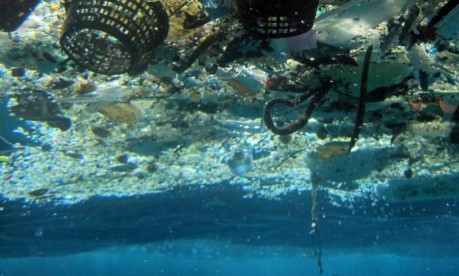If you haven’t already, meet the Great Pacific Garbage Patch, a collection of oceanic junk that has ballooned over the last four decades.
No one is sure how big it is, but it’s probably enormous.
A new study in Science Magazine tried to pin down some firm numbers by digging into various data: waste generation per person, the portion of that waste that’s plastics, the size of populations near the coast, and the quality of countries’ waste management systems.
The researchers surveyed 192 countries, and found that, between them, humanity dumped 10.5 billion to 28 billion pounds of plastic waste into the oceans in 2010 alone — about 1.3 times the weight of Egypt’s Great Pyramid at Giza.
The study also contains some valuable lessons about the nature of economic development, and how wealth creation can paradoxically be both friend and foe of the environment.
Now, the Great Pacific Garbage Patch isn’t actually a “patch.” It’s more like a vortex that circulates along the natural currents of the Pacific Ocean: millions of small, often microscopic bits of plastic junk in the water column, stretched over about 5,000 square kilometers.
And there’s at least two, a western and an eastern patch.
There’s circumstantial evidence that it’s killing filter-feeding animals and birds — especially albatrosses that mistake the plastic for food — and it’s definitely allowing certain invasive species to thrive and spread, throwing whole marine ecosystems out of whack.
The sizable majority of the trash originates on land instead of coming from ships or boats. But what the study found that’s really interesting is who’s contributing.
The United States isn’t exactly doing great here. It’s in the top 20 offenders out of 192 countries. (And if you treated Europe as one entity, it would be in the top 20, too.) But as you can see from the chart, America is a minor contributor compared to poor and developing countries, especially Indonesia and China. Continue reading
Source and Image:
